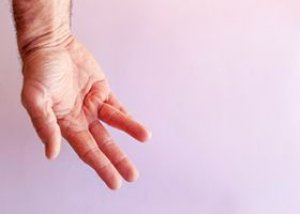
All iLive content is medically reviewed or fact checked to ensure as much factual accuracy as possible.
We have strict sourcing guidelines and only link to reputable media sites, academic research institutions and, whenever possible, medically peer reviewed studies. Note that the numbers in parentheses ([1], [2], etc.) are clickable links to these studies.
If you feel that any of our content is inaccurate, out-of-date, or otherwise questionable, please select it and press Ctrl + Enter.
Contracture
Medical expert of the article
Last reviewed: 07.07.2025

Contracture is a limitation of joint mobility, but with a clear presence of range of motion in it; complete immobility of the joint is defined as ankylosis of the joint; and the possibility of only punitive movements in the joint is called joint rigidity.
The working classification includes several positions, contracture is divided into: congenital and acquired; active (with limitation of active movements); passive (with limitation of passive movements) and active-passive; primary, when the cause of limitation of movements is pathology in the joint, and secondary, when limitation of movements is caused by pathology of surrounding tissues; by the type of limitation of movement, contracture is divided into flexion, extension, adduction or abduction, rotational, mixed type. In accordance with the localization of primary changes, contracture is divided into dermatogenic, desmogenic, tendogenic, myogenic and arthrogenic. According to the etiopathogenetic feature, there are: post-traumatic, post-burn, neurogenic, reflex, immobilization, professional, ischemic.
Congenital contracture: torticollis, clubfoot, club-handedness; arthrogryposis, etc. - are classified as orthopedic pathology. Acquired contracture occurs as a result of local changes in the joint or surrounding tissues or under the influence of general factors leading to muscle atrophy or impaired elasticity (hysterical contractures, lead poisoning, etc.). Dermatogenic contracture occurs with keloid changes in the skin due to wounds, burns, chronic infections, especially specific ones. Desmogenic contracture develops with wrinkling of fascia, aponeuroses and ligaments, more often with their constant trauma, for example, Dupuytren's contracture on the hand. Tendogenic and myogenic contracture develop with cicatricial changes in the tendons, their sheaths, muscles and surrounding tissues. But there may be other reasons: damage to the posterior muscle group or peripheral nerve may cause hyperfunction of the antagonist muscles; with neuralgia and myositis, persistent spastic contraction of the muscles may form; with prolonged immobilization in a vicious position, redistribution of muscle traction may develop, etc.
Arthrogenic contracture develops after intra-articular fractures, with chronic inflammatory or degenerative diseases of the joint and capsule. Neurogenic contracture is the most complex in pathogenesis, its diagnosis is the responsibility of neuropathologists.
Limitation of movement in the joint is a fairly clear demonstration symptom.
The process usually develops slowly, sometimes over years. It is important for the surgeon to establish the orthopedic etiology of the process and refer the patient to a specialist - a traumatologist-orthopedist, a burn specialist or to the plastic surgery department. For diagnostics, an X-ray of the joint is taken, preferably in different phases of movement (X-ray cinematography). The range of motion is determined with a goniometer. In all cases, the patient should be consulted by a neurologist.


 [
[